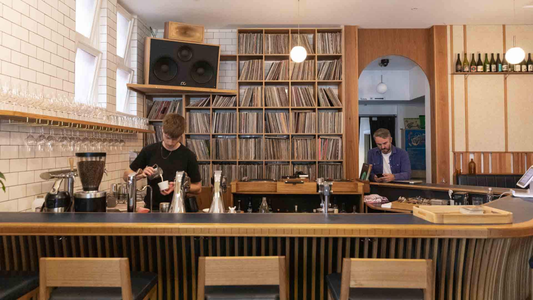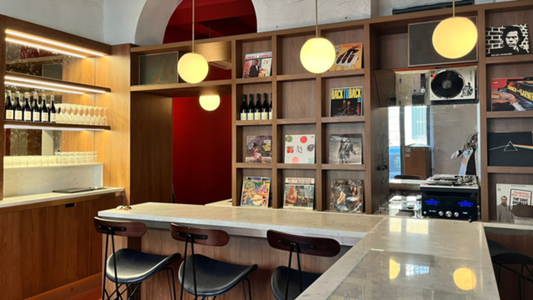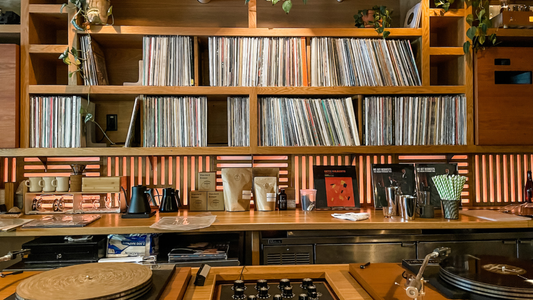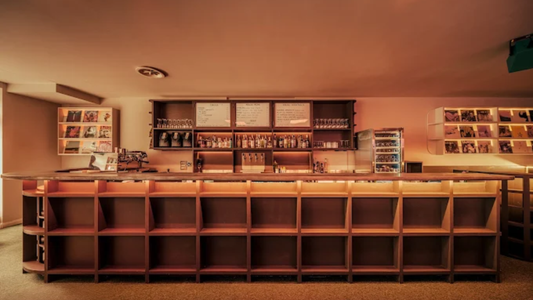
The Architecture of Quiet
How design, materials, and proportion create the stillness that lets music bloom.
By Rafi Mercer
The first thing you notice in a true listening space isn’t the sound — it’s the quiet. That soft, weighted calm before a record begins. You can feel it in the walls, the air, even the way the light sits. It isn’t silence exactly; it’s presence. The architecture itself is listening.
We tend to think of music as what happens when sound arrives, but in truth it begins much earlier — in the way a room allows sound to exist. The proportions, the surfaces, the materials underfoot: they decide what you’ll hear long before a single note plays.
Elements that shape the architecture of quiet:
- Proportion — balanced dimensions prevent sound from crowding or thinning.
- Material — wood, stone, and fabric absorb or reflect with warmth.
- Light — softer illumination encourages the eye — and the ear — to settle.
- Texture — a tactile room slows movement, inviting presence.
- Flow — how people enter and sit defines the rhythm of the experience.
In Tokyo’s jazz kissaten, quiet was the first design principle. Heavy curtains, thick walls, wooden floors. Every element aimed to control resonance, to allow a single piano chord to hang in the air and fade naturally. These bars were never minimalist for style’s sake; they were minimal to make room for sound.
Modern listening bars and homes are rediscovering this idea. Acoustic design has become as much about atmosphere as accuracy. Diffusion panels might hide behind timber slats; bass traps are disguised as sculptural furniture. The goal isn’t perfection — it’s balance, the point where the room disappears and the music feels suspended in mid-air.
Quiet also lives in light. Fluorescents buzz. LEDs hum. The human nervous system hears what the ear ignores. The best rooms know this and dim accordingly. Warm bulbs, low shadows, small pools of light around the turntable — these create stillness before the first note sounds.
And then there’s proportion. Architects like Le Corbusier spoke of “the music of space,” ratios that feel right before you understand why. The same applies to sound: rooms with balanced geometry — not too square, not too long — make music feel grounded. The listener becomes the central instrument, the space around them a kind of tuning fork.
The architecture of quiet isn’t only physical. It’s philosophical. It says: this is a place for attention. It resists speed. It reminds us that the quality of listening depends on the quality of stillness.
So when you next step into a listening bar, or build one at home, notice the silence first. It’s not emptiness — it’s preparation. Sound only matters because of the space that holds it.
Quick Questions
What makes a room sound good?
Proportion, material, and balance. Rooms that breathe — not echo — let music unfold naturally.
Why is quiet important before the music starts?
It sets the nervous system and the ear; attention sharpens when the noise of the world recedes.
Can design really change how we listen?
Completely. Architecture doesn’t just contain sound; it shapes our perception of it.
Next up the new art of attention.
Rafi Mercer writes about the spaces where music matters. For more stories from Tracks & Tales, subscribe, or click here to read more.







